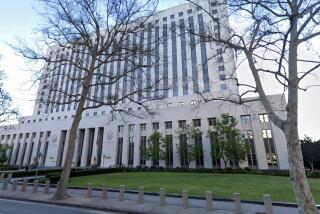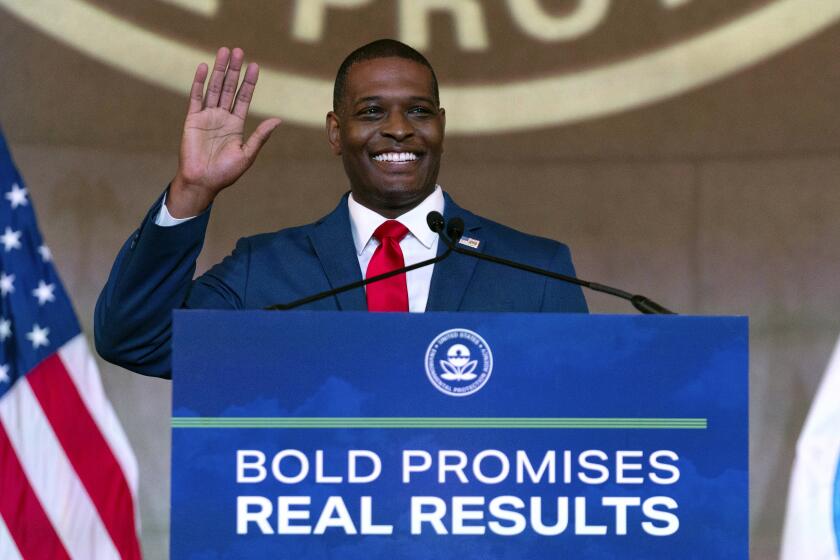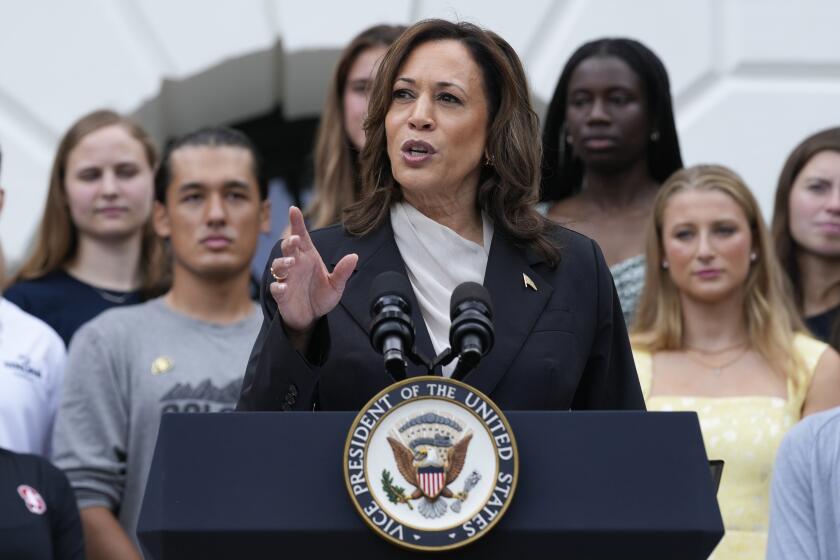Policeman Cleared in Killing of Unarmed Man : Justice: D.A. rules S.D. patrol officer was legally justified because he had been told the man had a gun.
A San Diego patrol officer who shot and killed an unarmed 20-year-old man in December was legally justified because he had been told the man had a gun and, once on the scene, interpreted the victim’s “body language . . . as consistent with that of a person . . . holding a weapon.”
In legally clearing Police Officer Paul Wright, 39, a 13-year veteran, the district attorney’s office said Wright drove to a Southeast San Diego apartment after hearing a dispatch report decribing victim Richard W. Cross as armed and dangerous.
Police said Cross’ girlfriend, Laurie Crosson-Mota, had told 911 dispatchers that Cross had a gun, although the woman denied the statement to reporters at the time.
In the district attorney’s report, delivered to Police Chief Bob Burgreen May 8 and released publicly Tuesday, the 911 dispatch tape was transcribed to record the conversation between Crosson-Mota and the dispatcher after she made the emergency call.
Dispatcher: “OK. Is he hitting you?”
Crosson-Mota: “Yes.”
Dispatcher: “Does he have any weapon?”
Crosson-Mota: “Yes.”
Dispatcher: “What kind of weapon? A gun?”
Crosson-Mota: “Yes.”
Wright took the radio call and was joined at the apartment complex by Detectives Tim Williams and Robert Connaughy. Wright listened at the door for a moment and heard someone talking in a “loud, agitated and rapid voice,” the report says. Williams reported that he, too, heard “angry voices” coming from the apartment.
Wright said he knocked at the door but did not identify himself as a police officer, because he wanted to get Cross away from Crosson-Mota.
The door partially opened and, Wright said, he pushed it farther open with his foot, but said he did not recall identifying himself as a police officer. Williams and Connaughy, however, said they heard Wright identify himself as a policeman.
Once the door was open, Wright said, he saw Cross with his right hand and arm “shielded from his view by his body” and that his “body language . . . seemed consistent . . . with that of a person who was holding a weapon in his right hand.”
In an interview with investigators, Wright said: “I thought he had a gun and he was turning toward me. As he turned, there was no time to say or do anything. I thought he was turning to shoot me.”
Wright fired a round from his pistol and then saw Cross’ empty hand for the first time. He asked Cross if he had been hit. “It’s OK,” Wright quoted Cross as saying.
Cross then fell to the floor with a wound to his arm and upper right chest. Wright said he began to perform CPR on Cross.
According to the report, San Diego police investigators interviewed Crosson-Mota twice.
The first time, she told them Cross had been hitting her. When police arrived, she said she told Cross that police were outside. He opened the door and was immediately shot, she said. She said she told the 911 operator that Cross had a knife but did not say he had a gun. Police found a closed folding knife with a 4-inch blade in the apartment.
She also told investigators that police did not identify themselves.
In a second interview, Crosson-Mota said she did not inform Cross that police were outside, but asked him to go into the bathroom while she answered the door. He refused and opened it himself, she said.
Two neighbors interviewed by police as witnesses said someone from inside the apartment pulled back the drapes and looked out. One said she heard the police identify themselves. The other witness said she did not hear them do so.
District attorney investigators said Wright’s personnel file lists four instances in which he discharged his gun. Two were accidental: one in which a suspect kicked his drawn pistol and one in which he struggled with another suspect. He also shot a large dog that was attacking him, another officer and a citizen and, under orders, he shot a deer that had been hit by a car.
The district attorney’s office has cleared hundreds of law enforcement officers in shootings since 1983, ruling in each instance that the officer was legally justified in using deadly force because the officer feared for his life or the safety of others.
More to Read
Sign up for Essential California
The most important California stories and recommendations in your inbox every morning.
You may occasionally receive promotional content from the Los Angeles Times.






